Preventing Window Collisions & Death of Migratory Birds
Apr 17, 2020Twice a year, most native birds make an incredible journey of thousands of miles to travel back and forth from their wintering area to their breeding area. This journey is fraught with perils: predators, weather, loss of habitat and stopover feeding grounds, and… WINDOWS.
Collisions with windows are the second leading cause of human-driven death for birds, with minimum estimates of over 3 MILLION bird deaths every single day in North America. It’s becoming a major concern around the country as bird populations decline.
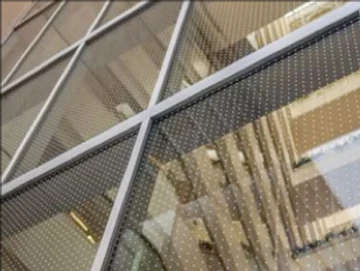
Birds cannot see glass. If it is transparent, they will attempt to fly through it. If it is mirrored, they see the reflection and mistake it for habitat. A bird requires only six feet of flying distance to reach a speed that will be fatal in a collision.
As beneficial as windows are for buildings, they create issues for properties when birds are dying.
The Cost of Unmanaged Bird Collisions
- Bird deaths increase maintenance costs: Dead birds need to be cleaned up and properly disposed of. Windows need to be cleaned more frequently due to the dust marks birds leave behind when they collide with the windows. Larger birds can even damage windows in a collision.
- Dead birds draw in rats and other scavengers: Scavengers have learned that window collisions can provide an easy meal, so many scavengers, including racoons, skunks, coyotes, and even rats and mice will regularly patrol building facades. This brings their mess and health implications onto your property.
- Dead birds draw insect pests: Dead birds create a breeding ground for flies, ants, and other insect pests.
- Potential fines and citations: More and more cities are starting to implement ordinances requiring that buildings be bird friendly in order to reduce the number of bird deaths.
Reap the Benefits of Bird-Friendly Efforts
Taking steps to reduce window collisions is a good idea for many reasons:
- LEED Credit: LEED offers credit for bird friendly buildings!
- Strengthening the economy: More than 45 million people take part in bird watching and bird tourism, according to a 2016 survey by the U.S. Fish & Wildlife Service, contributing billions of dollars to the economy each year and creating hundreds of thousands of jobs.
- Birds are beneficial: Even though some birds can create nuisance issues, many birds, especially the small birds that most frequently die from window collisions, are beneficial to humans. They provide free, natural insect and rodent control. They reduce stress with their beautiful colors and songs. They spread seeds and improve local natural areas.
Even Higher Risk of Bird Collisions
While all windows carry a risk, there are certain areas that pose a higher risk for bird collisions than others. Here are some primary risk factors to determine if your building is a liability for lethal window collisions:
- Skywalks and glass walkways: These features create transparent tunnels from one side of the property to the other. The birds see the habitat on the other side of the glass walkway and attempt to reach it by flying through.
- Mirrored Glass that reflects vegetation: While not all mirrored glass is high risk, any mirrored glass that reflects a tree or bush or body of water can trick birds into colliding with the window as they try to get to that habitat.
- Transparent glass with plants indoors: Indoor plants provide a lot of benefits, but when they’re paired with transparent glass, they can draw birds into colliding with the windows.
Let the Experts Help You End Bird Collisions
Wild Goose Chase is here to help you prevent window collisions and the problems they cause. Here are some solutions we can provide:
- Window Collison Assessments: This involves a full property assessment looking at all facades to determine risk factor as well as daily property patrols to gather data about the number and species of bird hitting the windows and determine which façade poses the highest risk. This allows us to provide solutions that are as effective as possible while also staying within your budget.
- Lights Out Program: Light in our buildings overnight draws night migrating birds in and can result in collisions. WGC can help you implement a targeted lights out program in order to reduce collisions while having a low impact on security.
- Window Decal Deterrents: WGC is a certified installer for Feather Friendly, a product that successfully prevents 95% of window collisions. This product is discreet, long lasting, and has options for customization.
- Collision Education and PR Programs: WGC can provide wildlife biologists specializing in window collisions to educate your employees and residents about the problem and the steps you are taking to solve it. We can also implement educational signage about the solutions you have implemented and coordinate with your PR department to promote your solutions.
This female Golden Crowned Kinglet survived her collision with just a concussion
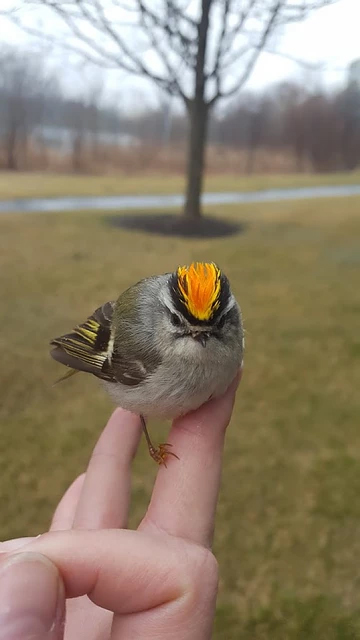
This male Golden Crowned Kinglet was injured in a window collision and needed to be taken to a wildlife rehabilitation center to recover
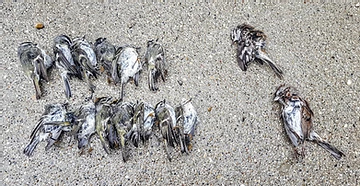
During migration, dozens of birds can die from window collisions on a single part of a single building every single day.
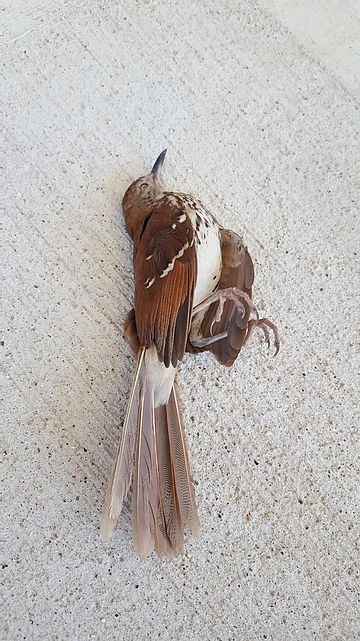
This Brown Thrasher did not survive when he collided with a window.
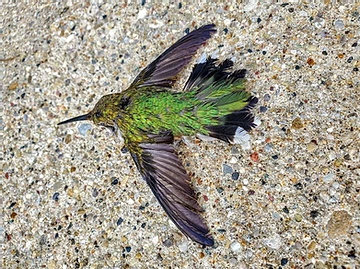
This Hummingbird did not survive when it collided with a window.
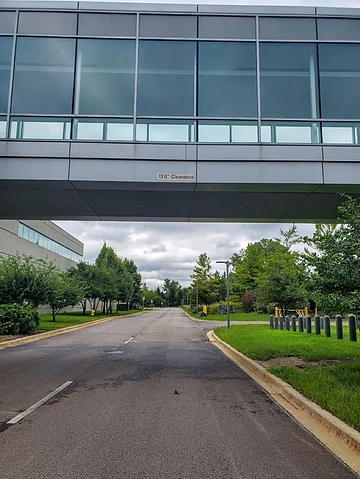
Skywalks are high risk areas. You can see the bird in the road that fatally collided with the skywalk.
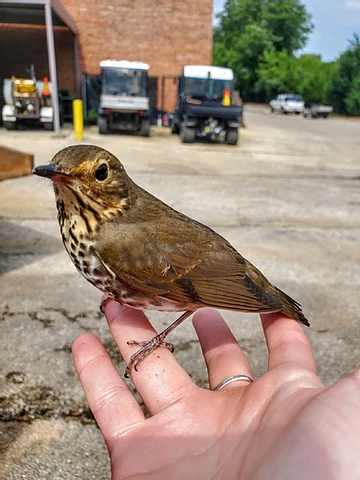
This Swainson’s Thrush was merely stunned after colliding with the window. If not helped to a safe place to recover, stunned birds are often killed by patrolling scavengers.
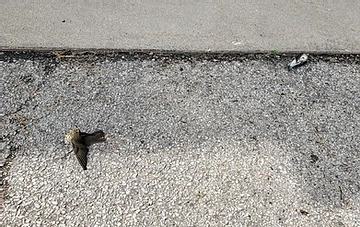
It is very common for multiple birds to strike the window in quick succession. Different species migrate at slightly different times so often you will get many deaths of one species as a flock stops at the property to rest.
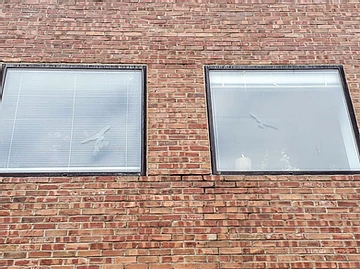
Hawk decals like these do not work to prevent collisions. Birds do not associate those decals with real birds of prey.
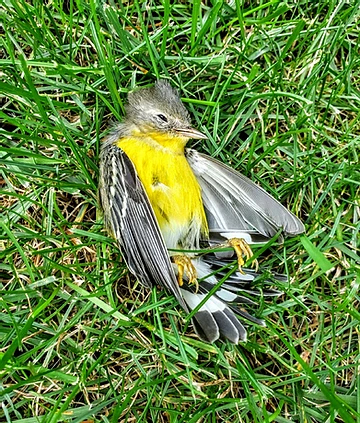
Window collisions and the deaths they cause CAN be prevented!
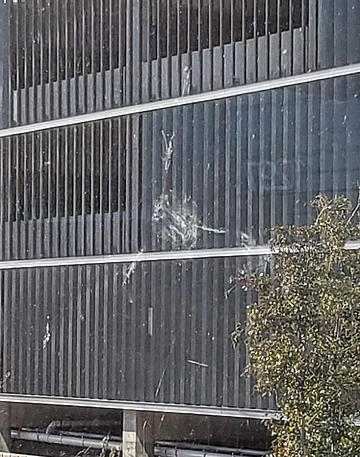
This is a “Dust Mark”. Birds have a lot of dust in their feathers which helps keep their feathers clean and free from parasites. When a bird collides with a window, they can leave imprints of themselves behind in dust. You can see the body and wings and tail in this dust mark. In some, you can see individual feather imprints. Sometimes there are actual feathers stuck to these dust marks.



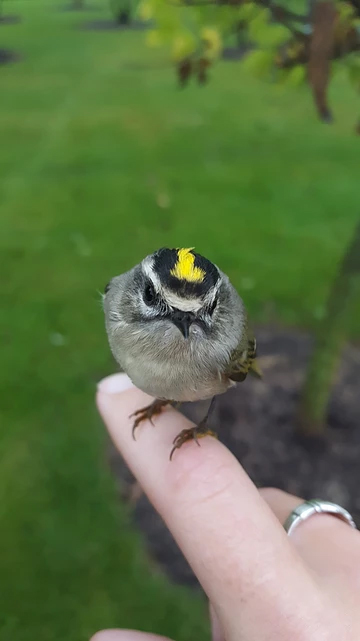

 0
0
